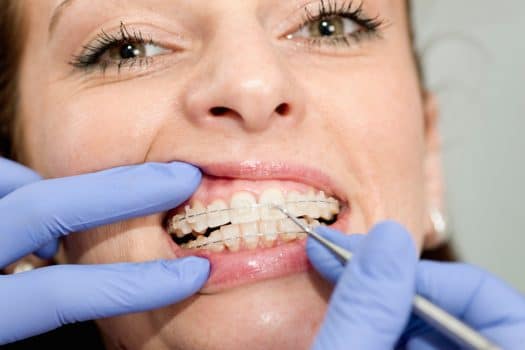The Best Strategy To Use For All Star Family Orthodontics
About All Star Family Orthodontics
Table of ContentsRumored Buzz on All Star Family OrthodonticsThe Buzz on All Star Family OrthodonticsA Biased View of All Star Family OrthodonticsAll Star Family Orthodontics for DummiesRumored Buzz on All Star Family Orthodontics

At Advanced Orthodontics, we offer clients with a alternative therapy experience. In addition, we supply adjustable treatment schedules, adaptable repayment alternatives and a fun, delightful experience - invisalign. Telephone call ( 480) 357-4900 today for additional information and timetable a visit.
An orthodontist is a dental professional trained to detect, protect against, and deal with teeth and jaw abnormalities. Orthodontists work with people of all ages, from kids to grownups.
Malocclusion, or misaligned teeth, can bring about dental concerns, consisting of dental cavity, gum tissue condition, and challenging or painful chewing. Yet not everyone is born with straight teeth. If you have a bad bite or big spaces between your teeth, you might desire to speak with a dentist focusing on orthodontic treatment.
The Greatest Guide To All Star Family Orthodontics
(Photo Credit Rating: DigitalVision/Getty Images) Orthodontists make use of dealt with and removable dental gadgets, like braces, retainers, and bands, to transform the setting of teeth in your mouth. Orthodontic treatment is for oral irregularities, including: Jagged teethBite issues, like an overbite or an underbiteCrowded teeth or teeth that are too much apartJaw misalignmentThe goal of orthodontic therapy is to improve your bite.
While you may assume of orthodontists as generally for kids or young adults who require braces, they can remedy dental issues at any age. Orthodontists participate in university, oral school, and orthodontic school.
, yet not all dental experts are orthodontists. They focus on two areas: Exactly how to effectively and safely move teeth Exactly how to effectively lead advancement in the teeth, jaw, and faceOnce an orthodontist has finished training, they have the option to become board licensed.
7 Simple Techniques For All Star Family Orthodontics
Misalignment, or malocclusion, is one of the most usual reason people see an orthodontist. It is genetic and is the outcome of size distinctions in between the upper and reduced jaw or in between the jaw and teeth. Malocclusion results in tooth overcrowding, a misshapen jaw, or uneven bite patterns. Malocclusion is normally treated with: Your orthodontist attaches steel, ceramic, or plastic square bonds to your teeth.
If you have only small malocclusion, you may have the ability to use clear braces, called aligners, as opposed to conventional braces. Some people need a headgear to help relocate teeth into line with stress from outside the mouth. After braces or aligners, you'll require to wear a retainer. A retainer is a customized tool that maintains your teeth in position.

You may require to see an orthodontist if you have: Crowding or not adequate room for every one of your teethOverbite, when your upper teeth come by your base teethUnderbite, when your bottom teeth are also far forwardSpacing or concerns with gapsCrossbite, which is when your upper teeth fit behind your base teeth when your mouth is closedOpen bite or an upright space in between your front bottom and top teethMisplaced midline, when the center of your base and top teeth do not align Dealing with an oral malocclusion can: Make biting, eating, and speaking easierImprove the balance of our face and your total appearanceEase pain from temporomandibular joint problemsSeparate your teeth and make them much easier to clean, helping protect against dental caries or tooth cavities additional resources It's frequently a dental professional that initially notices misaligned teeth throughout a regular exam.
The Definitive Guide to All Star Family Orthodontics
During your very first orthodontic appointment, you'll likely have: A dental examPhotos taken of your face and smileDental X-raysPanoramic (360 level) X-rays of your face and headImpressions to produce molds of your teethThese examinations will certainly aid your orthodontist recognize just how to wage your treatment. An orthodontist is a dental expert that's had training to treat your teeth and jaw.
Orthodontists might do surgical procedure, exams,X-rays, - old bridge alignersand even more to assist you achieve a much more comfortable, much healthier smile. An orthodontist is concentrated on your bite, so something like a chipped tooth would certainly be managed by a dental practitioner. Orthodontists are dentists but not all dental experts are orthodontists. Orthodontists are concentrated on your bite, or the way your teeth fit with each other, and the straightness of your teeth.

By meticulously examining these components, the orthodontist can pinpoint any type of imbalances, crowding, spacing concerns, or jaw discrepancies. When a clear image is established, the orthodontist will review customized therapy alternatives.
The Ultimate Guide To All Star Family Orthodontics
, orthodontists have a diverse toolkit at their disposal. These tried-and-true braces make use of a system of braces bound to the teeth and connected by wires.
Clear aligners, like Invisalign, are a prominent alternative for individuals seeking a much more discreet treatment option. These removable trays are customized to progressively change the teeth's placement. Headgear may be used combined with dental braces or aligners to apply additional targeted pressures, especially for fixing jaw discrepancies. In instances of narrow jaws, palatal expanders can be used to develop space for correct tooth placement.